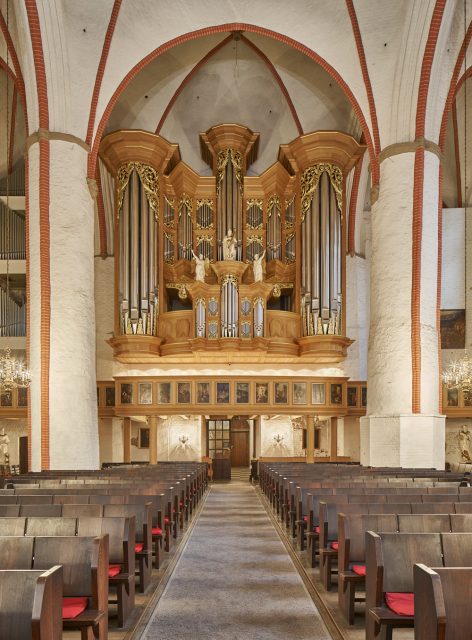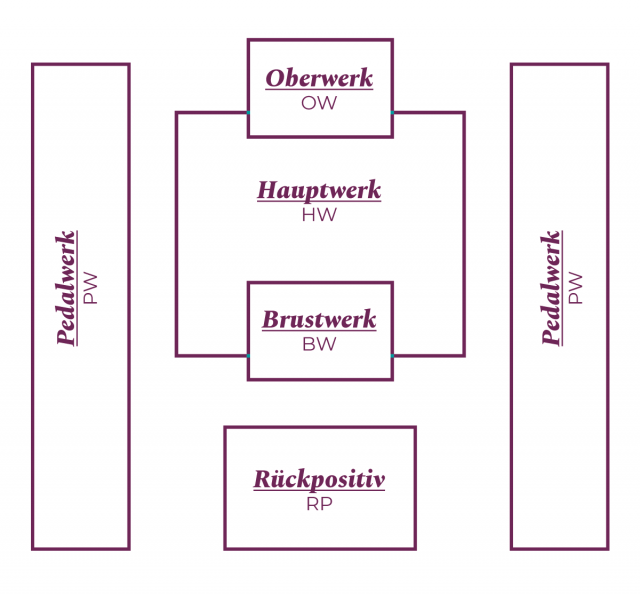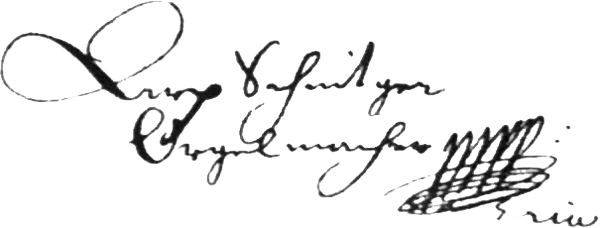Arp Schnitger for beginners
On the 28th of July in 2019 marks the 300th anniversary of the death of the world-renowned organ builder Arp Schnitger. From the 600 years of Hamburg organ building history, Schnitger is the most important protagonist. His accomplishment represents the climax and conclusion of the north German organ building tradition of his time. Even nowadays, the brilliance in its sound, the sonorous bass stops, the ability to mix variety of timbres and the audibility of its voices, fascinate organists all over the world.
The high tonal and technical quality of Schnitger’s organs established a fame which earned him the contract for what was probably the largest organ in the German-speaking world in the former major church of St. Nikolai, which, today is preserved only as a memorial.
Schnitger’s organ in the major church of St. Jacobi, however, still resounds today. The largest surviving baroque organ in Northern Europe attracts visitors from all over the world.
Also, the workshop and the grave of Schnitger are located in Hamburg, in the district of Neuenfelde, where another of his organs has been largely preserved in its original form.

Schnitger built a total of 170 organs throughout northern Europe and beyond, with the help of a branch network and many companions. That was an absolutely extraordinary achievement at the time. 47 instruments of these have either tonally or optically survived, twenty of them even dates back to the originals of Schnitger in its substantial parts, including the instruments in Groningen, Norden, Stade, Steinkirchen, Hamburg and in Pellworm.
Although many of his students and companions continued the tradition in the North, Schnitger’s organs have been forgotten. The “rediscovery” of the Schnitger organ in St. Jacobi by Hans-Henny Jahnn in the beginning of the 20thcentury was an important turning point and an impetus for a return to the sound world and the craftmanship of baroque style in organ building. Almost all surviving Schnitger organs underwent professional restorations and became role models for newly built style copies all over the world.

The so-called Hamburger Prospket, co-developed by Schnitger and raised to a creative standard, became nowadays a design principle in organ building. Thus, it is right to say, that Schnitger’s heritage remains not only in preserved original instruments but also lives concurrently in organ building and landscape of Hamburg in the 20th and 21st centuries.
And that is why Hamburg is pulling out all the stops in this organ year of 2019!

Header photo: Organ St. Pankratius Neuenfelde, Photo: Alexander Voss
Arp Schnitger
Date of birth
unknown, baptized 9.7. 1648
Buried
28.7.1719 in Neuenfelde
Organs in Hamburg
Hauptkirche St. Jacobi · St. Pankratius Neuenfelde · Kirche Bergstedt · St. Pankratius Ochsenwerder
His first organ
St. Cosmae et Damiani in Stade (completion of the work of his teacher Berendt Hus)
Sound examples
Arp Schnitger-Organ St. Pankratius Neuenfelde
Matthias Weckmann (1618/19 – 1674)
„Gott sei gelobet und gebenedeiet”
Hilger Kespohl, Orgel
Mit freundlicher Genehmigung der Musikproduktion Dabringhaus + Grimm, Detmold, © 2019
Matthias Weckmann (1618/19 – 1674)
„Praeambulum primi toni”
Hilger Kespohl, Orgel
Mit freundlicher Genehmigung der Musikproduktion Dabringhaus + Grimm, Detmold, © 2019
Arp Schnitger-Orgel Hauptkirche St. Jacobi
Matthias Weckmann (1618/19 – 1674)
„Praeambulum primi toni“
Rudolf Kelber, Orgel
Mit freundlicher Genehmigung von edition jacobi
Matthias Weckmann (1618/19 – 1674)
Toccata ex D
Rudolf Kelber, Orgel
Mit freundlicher Genehmigung von edition jacobi
Dietrich Buxtehude (1637–1707)
Toccata in F
Rudolf Kelber, Orgel
Mit freundlicher Genehmigung von edition jacobi
